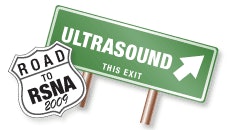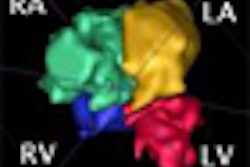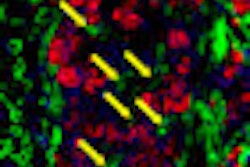The growing utility of contrast-enhanced ultrasound (CEUS) will be a major theme at this year's RSNA meeting. Unfortunately, many U.S. ultrasound specialists may feel like they're on the outside looking in, as researchers from Europe, Asia, and the rest of the world present studies on ultrasound contrast products they've been using for years, but that are still not commercially available in the U.S.
What's to blame for the discrepancy? Most would point fingers at the U.S. Food and Drug Administration (FDA), which has displayed a reluctance to approve any new ultrasound contrast agents beyond the two already in use for echocardiography applications. Fortunately, contrast ultrasound advocates appear to be making progress in their efforts to convince the FDA that ultrasound contrast is a safe and efficacious technology that can help the modality achieve the diagnostic performance of more expensive imaging techniques, without the radiation dose.
For example, at least two presentations at this year's RSNA show will highlight how contrast-enhanced ultrasound can potentially be used in place of lymphoscintigraphy for determining if cancer has spread to the lymph nodes. In one study to be presented on Tuesday, December 1 (3:10 p.m.-3:20 p.m., SSJ02-02, Room E450A), U.K. researchers will describe their results in 69 patients with breast cancer, while in a second presentation on Monday, November 30 (3:50 p.m.-4:00 p.m., SSE13-06, Room S504CD), researchers from Thomas Jefferson University in Philadelphia will discuss their use of lymphosonography in an animal model for melanoma metastases.

Besides contrast studies, another important topic at this year's RSNA show will be breast ultrasound. The modality has solidified its role as an adjunct to mammography for characterizing suspicious lesions, and at this year's meeting, look for more advanced studies on techniques such as elastography and computer-aided detection (CAD) for volumetric breast ultrasound.
The dynamic nature of ultrasound can make for challenges when reporting studies, and several presentations will discuss ways to make the reporting process more efficient, such as through BI-RADS-based structured reporting (Tuesday, December 1, 3:40 p.m.-3:50 p.m., SSJ11-05, Room S102D) or practice optimization (Monday, November 30, 3:30 p.m.-3:40 p.m., SSE12-04, Room S102D).
Among the refresher courses, keep an eye out for RC515B (Wednesday, December 2, 8:30 a.m.-10:00 a.m., Room E451B) on the value of screening breast ultrasound, presented by Dr. Wendie Berg, Ph.D., lead investigator of the American College of Radiology Imaging Network (ACRIN) 6666 trial.
A Thursday afternoon course, RC715 (4:30 p.m.-6:30 p.m., Room N230), will review several areas of breast ultrasound technique, instrumentation, and reporting, along with a special track on elastography.
Below are highlights of the ultrasound-related research scheduled for presentation at this year's RSNA meeting. To view the RSNA's Web site listing abstracts for this year's scientific and educational programs, just click here.



















